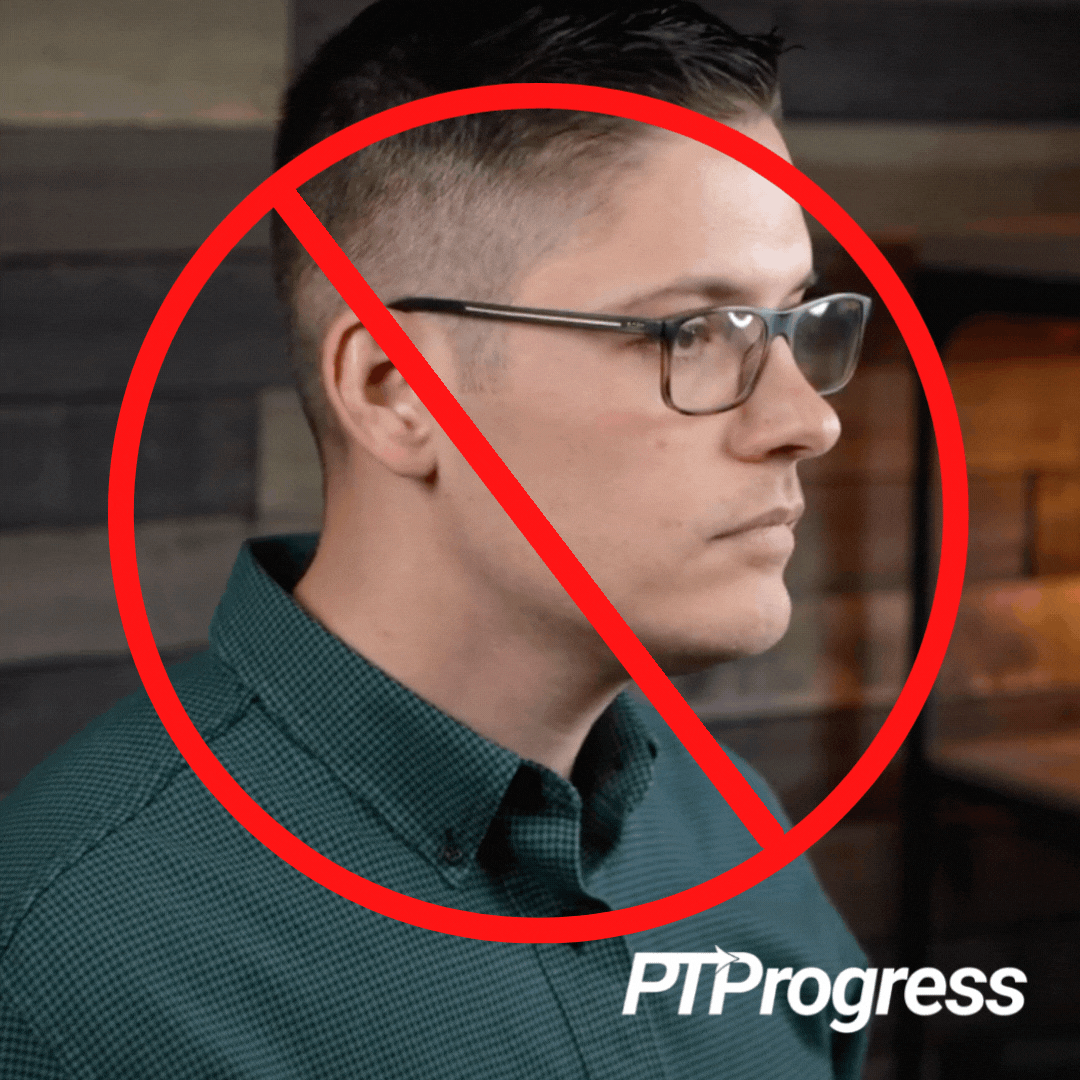
One of the best ways to eliminate neck pain and improve posture is to practice chin tucks. But without a Physical Therapist at home, how can you be sure you’re doing them properly? In this article I’ll walk you through the dos and don’ts of chin tuck technique. By performing chin tucks regularly and correctly, you can improve your posture with less pain and more precision.
Why Perform Chin Tucks?
By appearances, the chin tuck is a fairly underwhelming exercise with a self-explanatory name: to perform a chin tuck, you simply tuck your chin, over and over. However, this small movement is powerfully effective at posture rehabilitation, which is why it’s so often recommended.
Prolonged poor posture—often characterized by a forward head and rounded shoulders—can lead to neck pain, a neck hump, and postural kyphosis, an abnormally curved spine. Tucking the chin helps reverse kyphosis by putting the upper cervical vertebrae into flexion and the lower cervical vertebrae into extension.
Most importantly, a steady routine of chin tucks will help strengthen the neck’s intrinsic flexor muscles. If those little muscles are stronger, you’ll be less likely to slump your head forward and slink back into kyphosis.
How NOT to Perform a Chin Tuck

Maybe you’ve seen another PT or trainer demonstrate chin tucks by jutting their head straight back. But I’ve found this to be too aggressive for beginners—especially those with neck pain.
Jutting your head back and forth will engage several neck muscles simultaneously, when really the goal behind the chin tuck is to engage the small, intrinsic flexor muscles deep inside the neck.
What’s more, the sudden motion of retraction can actually cause an uncomfortable shearing force at the neck. Without the right instruction, chin tucks are tricky to master, and they’re far less effective when they’re imprecise.
How to Perform a Chin Tuck
To perform a chin tuck correctly, follow these steps:
- First, sit or stand tall and squeeze your shoulder blades together on your back. This shoulder squeeze, or scapular retraction, naturally lifts your head to the correct starting position.
- Now, imagine there’s a rod between your ears. Your goal is to nod your head so that it spins along the rod—inwardly and downwardly.
- Repeat 20 tucks for up to 3 sets.
Grated, it’s not a big movement—but it needn’t be. The muscles you’re targeting aren’t large themselves, and by minimizing the movement, you’ll better engage the smaller flexor muscles in your neck.
Finally, scapular retraction helps set the stage for proper chin tuck technique by bringing your head into neutral spine. If you’re doing it right, you may even feel a stretch along the suboccipital muscles on the back of your head when your chin is tucked.
Variations to the Chin Tuck Exercise
Once you have this motion down, you can vary your chin tuck exercises and further challenge your intrinsic neck muscles. Let’s take a look at a few examples.
Supine Chin Tuck
The first chin tuck variation occurs in the supine position, so lie on your back with a rolled-up towel under your neck at the base of your skull. Visualize that rod between your ears and use the same spinning motion to tuck your chin to your chest.
As you do the supine chin tucks, avoid lifting your head and neck from the table. That would engage muscles other than the ones you need to target.
Quadruped Chin Tuck
You can also perform chin tucks in a quadruped position while on your hands and knees. As opposed to standing or sitting, this position offloads your neck and reduces the downward pressure on your vertebrae. For that reason, you may experience a greater range of motion in supine or quadruped positions than you do in an upright position.
Nevertheless, be sure to keep the tuck movement small. Focus on nodding your head along the same axis as before, without engaging the larger neck muscles.
Wall Chin Tuck
To make the chin tuck even more challenging, you can perform the exercise with your back against a wall. Place a small towel behind your head and press against it as you nod your head.
Chin tucks don’t have to be boring. Get creative with it by adding upper extremity movements, such as arcing your arms overhead against the wall or extending them in front of you while keeping your shoulders back.
It’s easy to slip into forward head posture throughout the day when you’re not focused on your chin, so by adding these additional movements, you can apply the chin tuck exercise to more everyday postures.
Chin Tuck Technique: Final Thoughts
In summary, as you work to recalibrate your posture, you may be instructed to perform a chin tuck by jutting your head back and forth. And most people won’t encounter an issue doing it that way.
However, for utmost precision and least pain, I recommend using a spinning motion instead. It’s more precise and no less effective at engaging the intrinsic neck flexor muscles.

